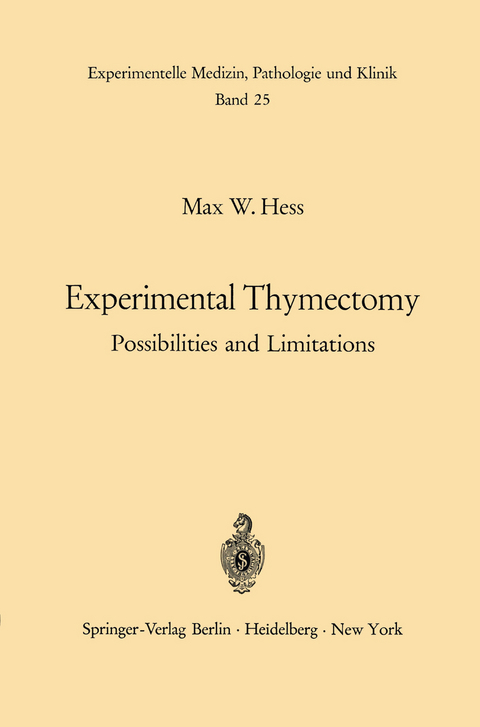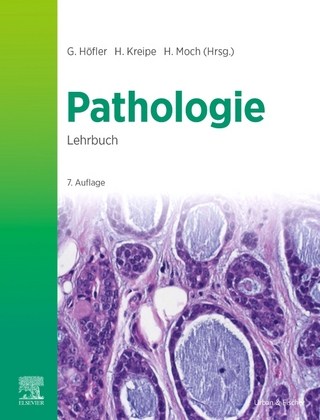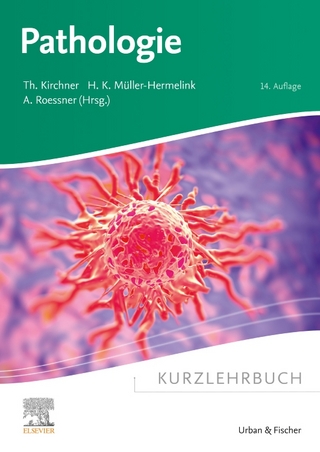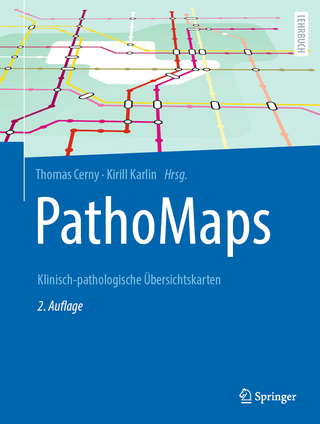
Experimental Thymectomy
Springer Berlin (Verlag)
978-3-642-86676-0 (ISBN)
1. Introduction.- 2. Phylogenetic and Ontogenetic Considerations.- 2.1. Phylogeny of Acquired Immunity.- 2.2. Ontogenetic Development of the Lymphoreticular Tissue and of Acquired Immunity.- 3. Growth Characteristics and Cellular Kinetics of the Thymus.- 3.1. Growth Characteristics of the Thymus.- 3.2. Proliferation of Thymic Lymphoid Cells.- 3.3. Intrathymic Fate of Newly Produced Lymphoid Cells.- 4. The Effects of Thymectomy on Antibody Formation.- 4.1. Neonatally Thymectomized Animals.- 4.2. Animals Thymectomized in Adult Life.- 4.3. Thymectomy and Acquired Immunological Tolerance.- 5. Additional Examples of Acquired Immunity in Thymectomized Animals.- 5.1. Hypersensitivity Reactions.- 5.2. Transplantation Immunity.- 5.3. Graft-versus-host Reactions.- 6. Thymectomy and Bursectomy in Birds.- 7. Post-thymectomy Wasting.- 8. Morphological and Functional Lymphoid Reconstitution of Thymectomized Animals.- 8.1. Thymus Implants.- 8.2. Injection of Lymphoid Cells.- 8.3. Diffusion Chamber Implants Containing Lymphoid Cells.- 8.4. Summary.- 9. The Role of the Thymus in Immunologic Deficiency Disorders in Man.- 10. Conclusions.- Literature.
| Erscheint lt. Verlag | 29.3.2012 |
|---|---|
| Reihe/Serie | Experimentelle Medizin, Pathologie und Klinik |
| Zusatzinfo | VIII, 108 S. |
| Verlagsort | Berlin |
| Sprache | deutsch |
| Maße | 155 x 235 mm |
| Gewicht | 188 g |
| Themenwelt | Medizin / Pharmazie ► Gesundheitswesen |
| Medizin / Pharmazie ► Medizinische Fachgebiete | |
| Studium ► 2. Studienabschnitt (Klinik) ► Pathologie | |
| Schlagworte | Gewebe • Immunologie • Organ • Syndrom • syndrome • Thymus • Wachstum • Zelle |
| ISBN-10 | 3-642-86676-X / 364286676X |
| ISBN-13 | 978-3-642-86676-0 / 9783642866760 |
| Zustand | Neuware |
| Haben Sie eine Frage zum Produkt? |
aus dem Bereich


